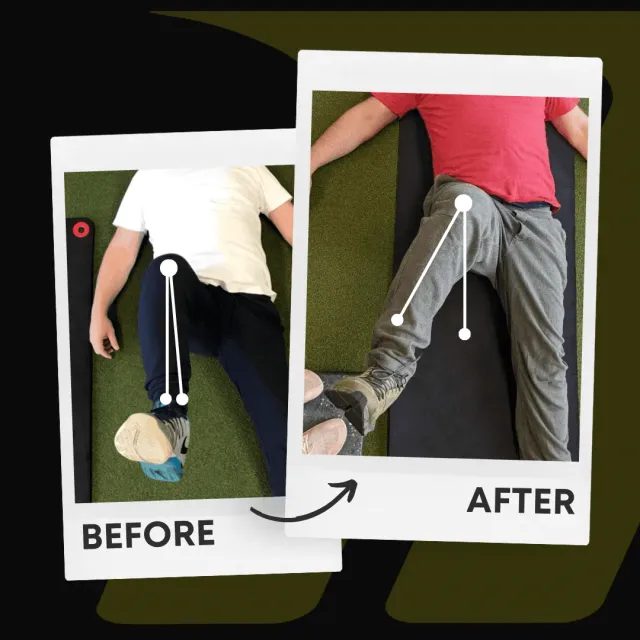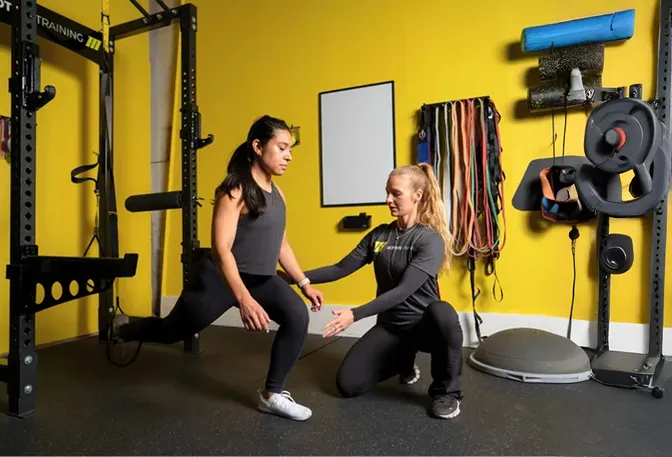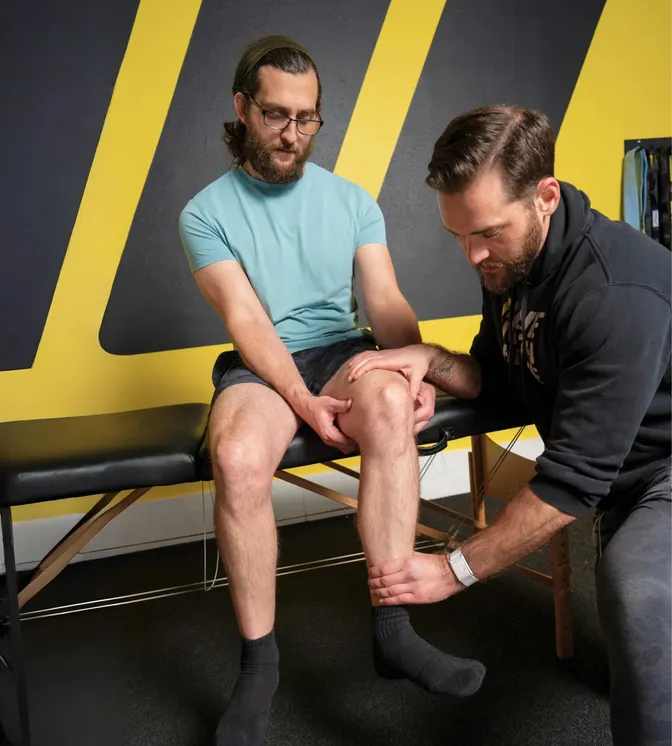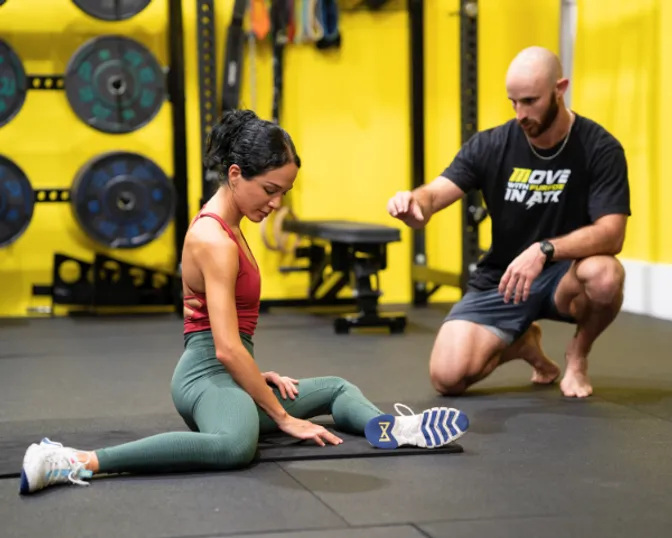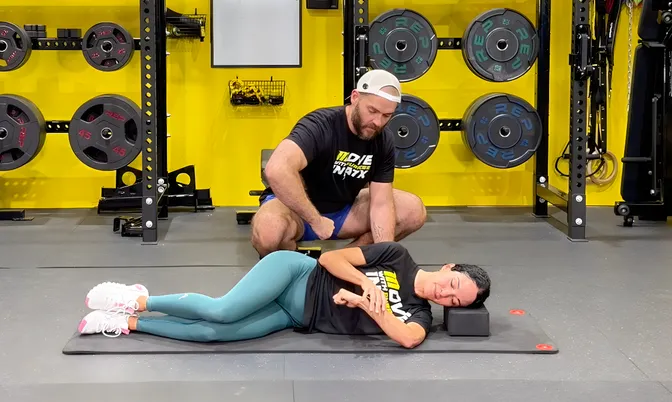KINSTRETCH vs. Yoga: Why Mobility Training Is the Smarter Choice
October 5, 2025 | Kinstretch
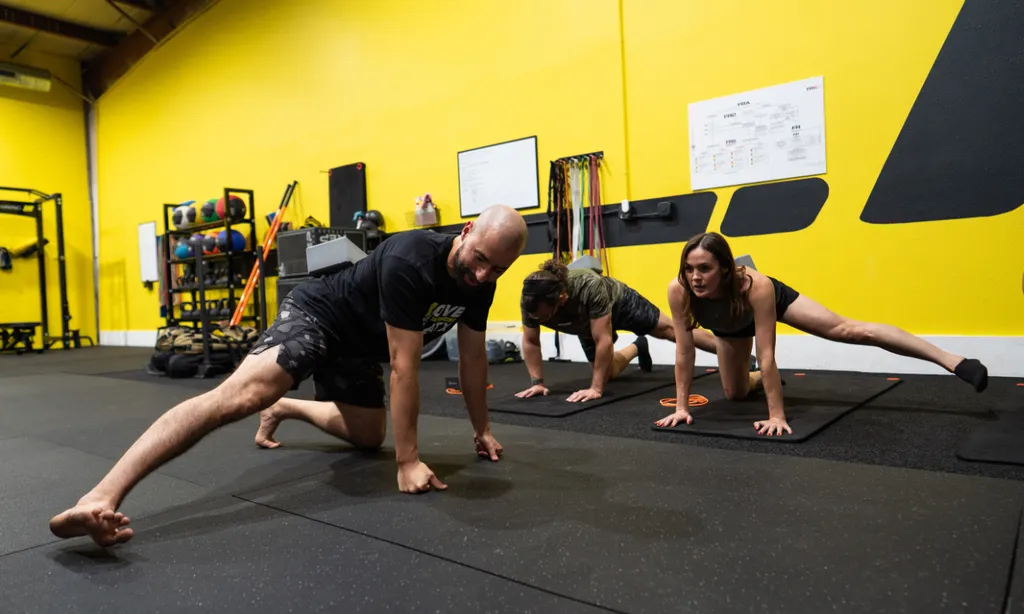
Introduction
Yoga is often the first practice people think of when they want to improve flexibility or reduce stress. It’s accessible, widely taught, and offers undeniable benefits. KINSTRETCH, on the other hand, is newer, more specialized, and less understood outside the mobility training world.
At first glance, both look similar: bodyweight-based, coach-led, movement-focused. But beneath the surface, they’re entirely different. Yoga is about posture and flow; KINSTRETCH is about joint health, strength, and function. If you want true mobility and resilience, you need to understand where yoga falls short and why KINSTRETCH fills the gaps.
What Is KINSTRETCH?
KINSTRETCH is a mobility training system built on Functional Range Conditioning (FRC), a science-backed approach to joint health. It’s not about hitting poses—it’s about training your joints and connective tissue the same way you’d train a muscle in the gym.
A typical KINSTRETCH class includes:
- Controlled Articular Rotations (CARs): Daily joint maintenance, used to assess and improve movement quality.
- PAILs/RAILs: Isometric strength-building methods that expand usable range of motion.
- End-range training: Building strength and control at your joints’ weakest points.
Unlike stretching routines, KINSTRETCH demands effort. You’re not passively sitting in a pose—you’re actively training your body to create more range and then own it.
Explore what we mean in detail in Why KINSTRETCH Is the Best Mobility Class Around.
What Is Yoga?
Yoga is an ancient practice that combines physical postures, breathwork, and mindfulness. Depending on the style—Vinyasa, Hatha, Power, Yin—you’ll experience a mix of stretching, strengthening, and meditation.
The physical side of yoga revolves around poses (asanas). Each position is held or transitioned through, with the aim of improving posture, flexibility, and sometimes strength. Done consistently, yoga can absolutely help people move better and feel more connected to their bodies.
We’ve covered yoga in depth in Should You Do Yoga?, including where it shines and where it falls short.
Pose vs. Joint: The Fundamental Difference
This is where the biggest split happens.
- Yoga is pose-focused. The goal is to achieve a certain structure or position, often emphasizing external flexibility (how far your body can stretch in space).
- KINSTRETCH is joint-focused. The goal is to improve the quality, control, and strength of each joint and tissue, regardless of how it looks from the outside.
For example:
- In yoga, a deep forward fold emphasizes hamstring length, but it rarely trains active hip flexion strength.
- In KINSTRETCH, hip flexion is trained both passively and actively, meaning you gain control, not just flexibility.
The difference is that yoga attempts to increase mobility through poses, while KINSTRETCH creates mobility by directly training the joint itself.
Where Yoga Falls Short
Yoga is not “bad.” It offers stress relief, breathing awareness, and flexibility. But it’s not complete as a long-term mobility or resilience practice. Here’s why:
- Hip internal rotation is barely addressed. Most yoga poses focus on external rotation (think lotus or pigeon pose), but internal rotation is critical for hip health and athletic performance.
- Shoulder internal rotation is overlooked. Yoga emphasizes overhead or open-chest positions, but few poses load the internal rotation needed for pressing, throwing, or daily function.
- Scapular movement is missing. The shoulder blade’s ability to move, rotate, and glide is foundational to shoulder health. Yoga doesn’t emphasize this; KINSTRETCH does.
- Toe articulation is ignored. Your toes play a major role in balance and gait. KINSTRETCH directly trains toe flexion and extension; yoga rarely isolates it.
- Ankle eversion and inversion don’t get trained. Yoga might stretch calves, but it doesn’t build rotational control at the ankle—a huge factor in preventing sprains and foot pain.
These are integral training components for real resilience. Ignoring them may leave you flexible in certain planes but still vulnerable to injury.
| Category | KINSTRETCH | Yoga |
|---|---|---|
| Primary Focus | Joint health, mobility, and strength | Flexibility, posture, and mindfulness |
| Method | Scientific, joint-by-joint, tissue-focused | Pose- and position-focused |
| Training Style | Active inputs: CARs, PAILs, RAILs, end-range strength | Flowing or static postures, holds, and transitions |
| Specificity | Targets every joint (hips, shoulders, spine, toes, ankles, etc.) | General whole-body positions with limited joint-specific emphasis |
| Outcome | Increased resilience, injury prevention, improved performance | Stress relief, general flexibility, posture awareness |
| Best For | Athletes, those in pain, anyone seeking longevity and functional strength | People seeking balance, stress management, or a flexible movement option |
Benefits of KINSTRETCH
- Builds strength where you’re weakest (end ranges).
- Expands joint capacity for pain-free movement.
- Trains mobility as strength, not just stretch.
- Directly addresses problem areas (hips, shoulders, spine, toes, ankles).
- Complements strength training, running, cycling, or any athletic pursuit.
Want to see how it works in practice? Take a look at our End-Range Mobility Training guide.
Benefits of Yoga
- Improves flexibility and posture.
- Encourages mindfulness and stress reduction.
- Promotes balance and coordination.
- Accessible for beginners with a wide range of class styles.
Yoga can be an excellent complement to other training. Many people find it improves their mental health and body awareness, even if it doesn’t address every joint-specific need.
Why KINSTRETCH Is the Smarter Choice
When you put the two side by side, it becomes clear: yoga is beneficial, but KINSTRETCH is more complete for building a resilient, capable body.
- Yoga creates positions. KINSTRETCH creates function.
- Yoga promotes flexibility. KINSTRETCH develops usable strength.
- Yoga calms the mind. KINSTRETCH fortifies the joints.
For people in Austin—whether you’re an athlete, someone managing pain, or just looking to future-proof your body—KINSTRETCH is the practice that ensures you can keep moving well for years to come.
Learn more about our mobility coaching in Austin and how KINSTRETCH fits into personal training programs.
Conclusion
Yoga and KINSTRETCH don’t have to compete. You can enjoy both. But if your goal is joint health, pain-free movement, and athletic resilience, KINSTRETCH is the practice that gets you there.
The truth is, most people don’t need more passive stretching—they need mobility that’s trained, strengthened, and controlled. That’s what KINSTRETCH delivers.
Ready to experience it? Join us for KINSTRETCH in Austin or train from anywhere with KINSTRETCH Online.
Written by
Brian Murray, FRA, FRSC
Founder of Motive Training
We’ll teach you how to move with purpose so you can lead a healthy, strong, and pain-free life. Our headquarters are in Austin, TX, but you can work with us online by signing up for KINSTRETCH Online or digging deep into one of our Motive Mobility Blueprints.
